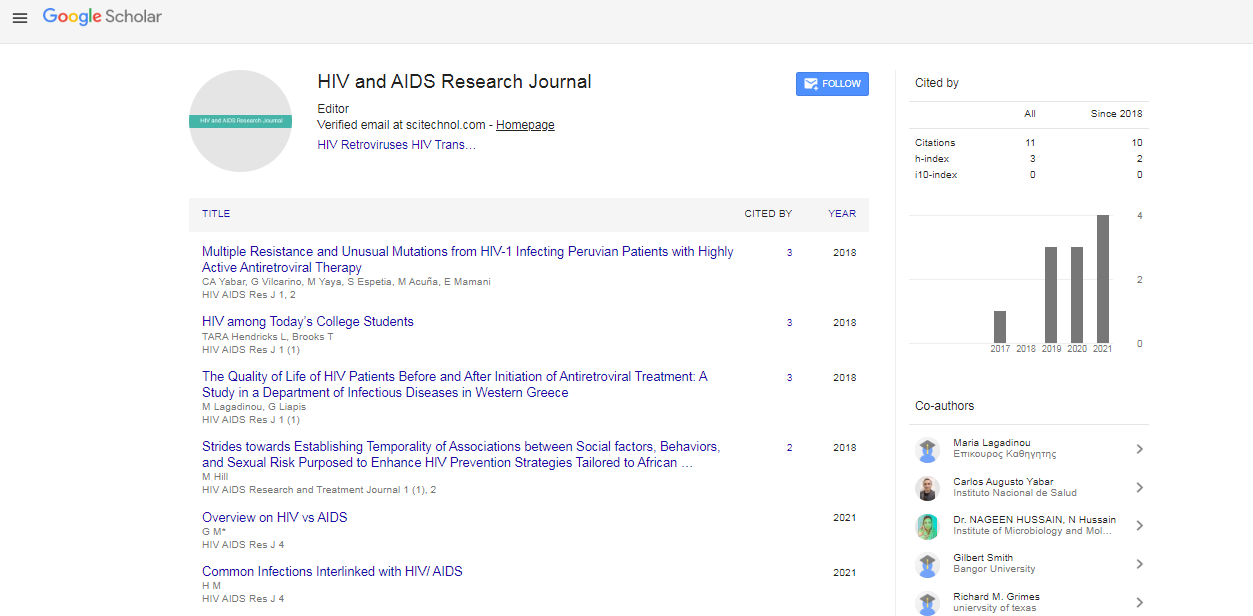Editorial, Hiv Aids Res Vol: 7 Issue: 1
Prevention Strategies for HIV in India
Manish Gupta*
Department of Public Health, Tata Institute of Social Sciences (TISS), Mumbai, India
- *Corresponding Author:
- Manish Gupta
Department of Public Health, Tata Institute of Social Sciences (TISS), Mumbai, India
E-mail: manish.gupta@tiss.edu
Received: 01-Mar-2025, Manuscript No. HARJ-25-170193; Editor assigned: 4-Mar-2025, Pre-QC No. HARJ-25-170193 (PQ); Reviewed: 20-Mar-2025, QC No HARJ-25-170193; Revised: 26-Mar- 2025, Manuscript No. HARJ-25-170193 (R); Published: 30-Mar-2025, DOI: 10.4172/Harj.1000
Citation: Manish Gupta, Department of Public Health, Tata Institute of Social Sciences (TISS), Mumbai, India. HIV AIDS Res J 7:1.
Copyright: © 2025 Manish Gupta, this is an open-access article distributed under the terms of the Creative Commons Attribution License, which permits unrestricted use, distribution, and reproduction in any medium, provided the original author and source are credited.
INTRODUCTION
HIV prevention strategies have been central to Indiaâ??s National AIDS Control Programme (NACP). Preventing new infections through awareness, behavioral change, and biomedical interventions is key to controlling the epidemic [1].
Biomedical Interventions
Condom promotion, needle exchange programs, and HIV testing campaigns have been effective in high-risk groups. Antiretroviral therapy (ART) as prevention and pre-exposure prophylaxis (PrEP) are emerging tools in India, with pilot projects underway in select states [2].
Behavioral and Structural Interventions
Targeted interventions with community participation have reduced infection rates among sex workers and drug users. Education campaigns and counseling services are also widely implemented [3]. Governmentâ??NGO partnerships have played an essential role in mobilizing communities and improving prevention outcomes [4].
CONCLUSION
Scaling up PrEP, integrating HIV services with primary health care, and addressing stigma are critical next steps for effective HIV prevention in India.
REFERENCES
- NACO. National Strategic Plan for HIV/AIDS and STI 2017–2024.
- Haldar P. Role of ART in HIV prevention. Indian J Community Med. 2016;41: 82–87.
- Verma R. Impact of targeted interventions on HIV prevention. AIDS Educ Prev. 2010;22: 137–151.
- Bharat S. HIV prevention in India: structural approaches. Glob Public Health. 2011;63: S123–S136.
- Narayan A. Community-led HIV prevention. Indian J Med Res. 2019;149: 700–707.
 Spanish
Spanish  Chinese
Chinese  Russian
Russian  German
German  French
French  Japanese
Japanese  Portuguese
Portuguese  Hindi
Hindi 